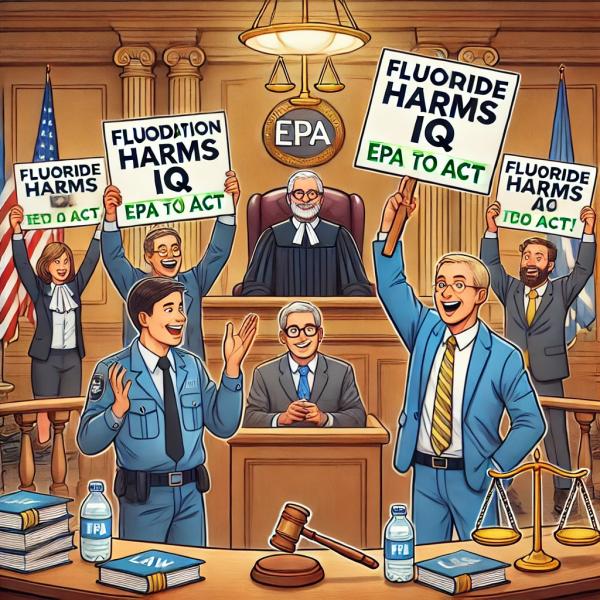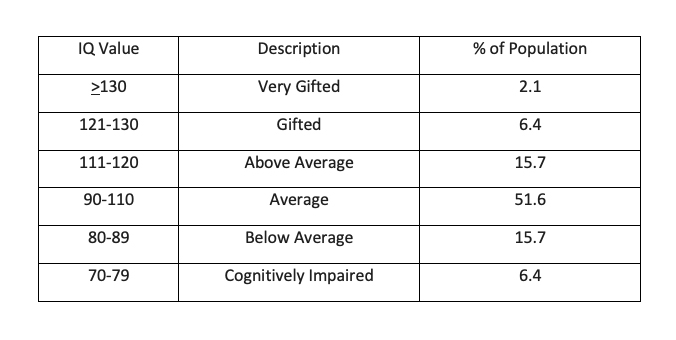
Background
In my article The Fluoride Controversy Never Dies I discussed the long history of fluoridation in the US, beginning in 1945 when Grand Rapids, Michigan, became the first city in the world to fluoridate its water supply to help fight tooth decay. Results showed that Grand Rapids children born after fluoride was added to the water had a 60% reduction in cavities. Over the years, fluoridation has spread across the US, with 75% of our population receiving fluoridated water today.
“It's incredibly obvious, isn't it? A foreign substance is introduced into our precious bodily fluids without the knowledge of the individual. Certainly without any choice. That's the way your hard-core Commie works.”
– General Jack Ripper in Dr. Strangelove
Opposition to fluoridation began almost immediately, based initially on conspiracy theories of a communist plot. However, more recently, evidence-based arguments have emerged against fluoridation, such as acknowledging that dental decay is multicausal, and it is misguided to focus on a single solution, and topical application of fluoride is a better approach than fluoridation of water. Opponents have argued that EPA's allowable level of fluoride in drinking water of 4 milligrams per liter (mg/L) does not present an adequate margin of safety for neurotoxic effects in children.
Court Case
The court case relied on the 2024 National Toxicology Program (NTP) report that concluded, with moderate confidence, that:
- Fluoride concentrations that exceed the World Health Organization’s Guidelines for Drinking Water Quality of 1.5 mg/L of fluoride are associated with lower IQ in children.
- Some children in the US drink water above 1.5 mg/L because people receive fluoride from multiple sources (not just drinking water).
- Limited studies indicated fluoride is not associated with adverse effects in adults or other neurological effects in children.
These conclusions considered the results of 19 high-quality (low risk-of-bias) studies on the association between fluoride exposure and IQ in children. None of these studies were conducted in the US: ten were conducted in China, three in Mexico, two in Canada, three in India, and one in Iran. The IQ tests varied from study to study and country to country, and most studies measured fluoride in drinking water and/or urine.
The NTP Report did not address whether exposure to fluoride in the US at 0.7 mg/L is associated with a measurable effect on IQ or the benefits of fluoride on oral health.
What is Intelligence Quotient (IQ)?
An IQ is the total score derived from a series of standardized tests designed to test human intelligence. The final score compares a person's test results to those of people their age, with a score of 100 indicating average ability. [1]
The graph shows the normalized IQ distribution with mean 100 and standard deviation 15.
Fluoride is not the only chemical associated with lowering IQ; lead is a famous example. This may have more to do with the nature of IQ studies themselves than with an actual association. As I noted in On Lead and IQ, there are several shortcomings in studies that equate chemical exposure with a decrease in IQ (my article focused on lead, but the same shortcomings are present for fluoride):
- When chemicals are shown to be associated with IQ, authors control for some variables but often ignore important variables such as smoking and drinking by the mothers while pregnant.
- In most studies, parental IQ is not measured. This crucial variable affecting children’s IQ is rarely accounted for in studies.
- Since the IQ tests are considered to have a margin of error of approximately 5 points on either side, the small increases seen in most IQ studies are within the margin of error.
The fluoride studies showing statistically positive associations may not be truly “positive” but within the margin of error. In addition, none of these studies showed that fluoride caused a decrease in IQ; at best, they showed an association that requires much more data to prove causation.
The Court ruled that
“Fluoridation of water at 0.7 milligrams per liter, the level considered “optimal” in children, poses an unreasonable risk of reduced IQ in children. It should be noted that this finding does not conclude with certainty that fluoridation is injurious to public health, rather, as required by the amended TSCA, the Court finds that there is an unreasonable risk of such injury, a risk sufficient to require the EPA to engage with a regulatory response. This order does not dictate what that response should be.” [emphasis added]
This court case was a tremendous victory for anti-fluoridation advocates and others looking to reign in Federal bureaucratic power. Three months after the Supreme Court ended the 40-year-old precedent of "Chevron Deference," i.e., deferring to Agencies' expertise in interpreting ambiguous regulatory law, the Court owing no deference to the EPA voided the EPA assessment of the risk posed by fluoride.
It will be interesting to see if the EPA chooses to appeal this decision or begins the regulatory process to reduce fluoride in drinking water further. The Toxic Substance Control Act does not allow for cost-benefit analysis, and it is unclear whether this ruling will result in the EPA rethinking the quality of the studies used as the basis for regulations. If the EPA does lower the fluoride level, it will conflict with public health and dental associations, which strongly advocate fluoridation. Today’s victory for the anti-fluoridation advocates is just another chapter in the 80-year saga of fluoride in drinking water.
[1] The different descriptions based on IQ scores





